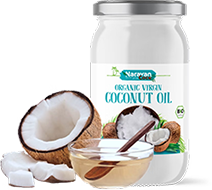English Lavender – The Fragrant Healer of the Garden
Scientific Name: Lavandula angustifolia
Common Names: English Lavender, True Lavender, Garden Lavender
Family: Lamiaceae
Overview
English Lavender (Lavandula angustifolia) is one of the most cherished aromatic herbs in the world, valued for its soothing fragrance, delicate purple flowers, and wide range of uses. Although native to the Mediterranean, it earned its name due to its popularity in English cottage gardens.
Lavender is a symbol of calm, healing, and beauty—used in wellness, natural medicine, skincare, and sustainable agriculture.
Botanical Description
- Plant Type: Woody perennial shrub
- Height: 30–90 cm (1–3 feet)
- Leaves: Narrow, gray-green, and aromatic
- Flowers: Small purple-blue flowers in spikes
- Fragrance: Sweet, floral, herbaceous aroma
- Bloom Time: Late spring to mid-summer
Key Constituents
- Linalool
- Linalyl acetate
- Camphor
- Terpenes
These provide its calming, antimicrobial, and anti-inflammatory effects.
Medicinal Properties
English Lavender is renowned for its therapeutic effects and is one of the most widely used herbs in aromatherapy.
- Stress Relief: Promotes calm and reduces anxiety
- Sleep Aid: Enhances sleep quality
- Pain Relief: Eases headaches, migraines, and joint pain
- Skin Health: Treats burns, acne, insect bites, and irritation
- Digestive Aid: Relieves bloating and nausea (in tea form)
- Antimicrobial: Combats bacterial and fungal infections
⚠️ Note: Essential oil should be diluted before skin use. Avoid ingestion unless professionally advised.
Culinary & Cosmetic Uses
- Teas & Infusions: Used in calming herbal teas
- Cuisine: Enhances desserts, syrups, and savory dishes
- Skincare: Found in soaps, lotions, and oils
- Haircare: Used in shampoos and scalp treatments
- Aromatherapy: Essential oil used in diffusers and massage oils
Cultivation & Growing Conditions
Lavender is drought-resistant, easy to grow, and ideal for organic farms and gardens.
Growing Requirements:
- Climate: Prefers dry, Mediterranean-type climates
- Soil: Well-drained, sandy or loamy soil with pH 6.5–7.5
- Sunlight: Needs full sun (6–8 hours daily)
- Watering: Low water needs; avoid overwatering
- Propagation: Seeds, cuttings, or root division
- Harvesting: Pick flowers early in bloom for best aroma
Role in Organic & Sustainable Farming
- Natural Pest Control: Repels aphids, moths, and mosquitoes
- Pollinator Friendly: Attracts bees and butterflies
- Low Maintenance: Thrives without synthetic inputs
- Companion Plant: Enhances soil and protects nearby crops
Cultural & Economic Importance
- Historic Use: Used in ancient Roman, Greek, and Egyptian medicine and rituals
- Symbolism: Represents calm, grace, and purity
- Market Demand: Essential oils, bath products, and crafts
- Farm Revenue: High-value crop with many artisanal applications
Conclusion
English Lavender is a botanical gem with a long-standing tradition of healing and beauty. Easy to cultivate and incredibly versatile, it supports health, enhances organic farming, and brings serenity to every environment it touches. Truly, lavender is nature’s fragrant healer and a perfect addition to any wellness-focused farm or home.
 Fishing Reels Spin
1 × $100.00
Fishing Reels Spin
1 × $100.00
 Spoon lure tackle Baits
1 × $19.00
Spoon lure tackle Baits
1 × $19.00
 Fishing Reels Globeride
1 × $10.00
Fishing Reels Globeride
1 × $10.00
